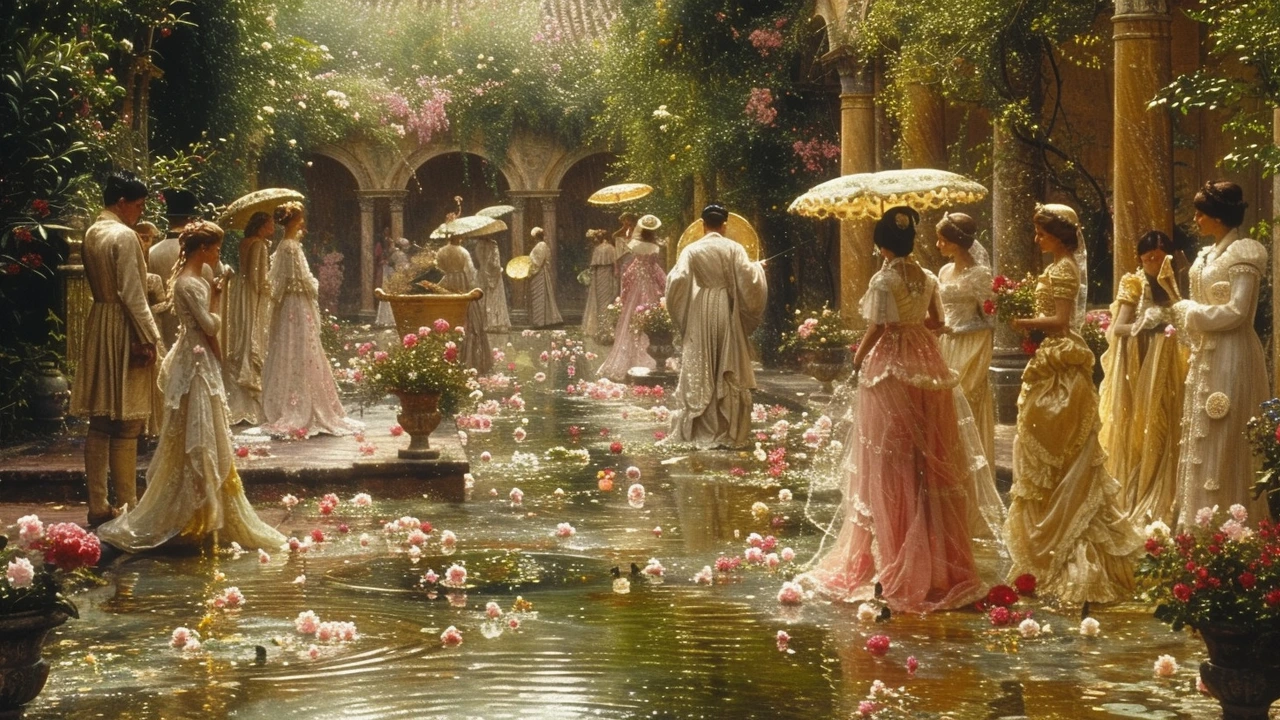Renaissance Revival Architecture: A Blend of Old and New
 Oct, 17 2023
Oct, 17 2023
The Birth of Renaissance Revival Architecture
Strolling along the cobblestone streets of my hometown, Melbourne, last summer, I encountered an interesting question. You see, there's something absolutely fascinating about our city's cityscape—a blend of old and new. The question at hand? What makes the Renaissance Revival architecture that colonizes the corners of our streets so captivating? Why do they resonate with us on such profound levels? C'mon mates, let's delve into this together. You, me and maybe Oliver, my furry Maine Coon on the sidelines. Renaissance Revival architecture, or as some prefer, 'Neo-Renaissance', is not merely about building structure—it’s a statement, a form of expression born in the 19th century. Much like our heartstrings seem to vibrate when we hear "Waltzing Matilda", these structures resonate a familiar tune. They encapsulate a desire to recreate the magic of the era of rebirth—the Renaissance. A reader once commented on a previous post, "Time travel does not exist". Well, folks, with Renaissance Revival architecture, it does.
The Distinct Faces of Renaissance Revival Architecture
Now, you are sitting there, sipping your flat white, thinking, "Okay, Donovan, we get it. They look shiny and old. But what makes them different? How do we distinguish them from other architectural styles?" Well, brace yourself for details, dear reader, because here's where it gets interesting. Renaissance Revival architecture isn't simply one style, it has many faces. The Italian Renaissance Revival, for example, draws heavily from 16th century Italy. Picture the symmetry, the balance, the orderliness of the Palazzo Farnese in Rome—now that's Italian Renaissance. Meanwhile, the French Renaissance Revival boasts extravagant ornamentation, generous use of statues and bas-reliefs, inspired by French chateaus. Just think back to the time I got lost in Paris and wandered into the courtyard of the Louvre—that's French Renaissance Revival for you! Even right here in ruggedly beautiful Melbourne, we have our flavour in Renaissance Revival—the Queen Anne style. Oh boy, this is a gorgeous, riveting blend of English and American styles, characterized by whimsical towers, broad porches, and complex rooflines. Quite an artistic mesh-up, if you will!
The Art and Science of Building Neo-Renaissance Style
Now, mate, you don’t need to be an architect to understand the nuances of Renaissance Revival architecture. It's a lot like making a perfect pavlova. At first sight, it seems complicated. Layer upon layer of fluffy meringue, soft cream, and colourful fruits. Yet, with the right recipe, you'll make a perfect one. Same goes for designing Renaissance Revival buildings. First off, symmetry is key. As I'm writing this, Zoe, my golden retriever, tries to align her toys in a perfectly symmetrical fashion. Well, if a dog can do it, so can you! The love for balance and symmetry in Neo-Renaissance architecture is borrowed directly from the Classical Roman architecture. Just like Zoe’s toy arrangement, the buildings often have evenly spaced windows and perfectly centred doors. Additionally, Neo-Renaissance buildings love to play dress-up. They're adorned with extravagant ornamentations, decorative cornice, round arches and columns. Terracotta is often the material of choice for these details. Remember that trivia night when you couldn’t recall the popular building material starting with 'T'? Yep, that's right—terracotta!
The Enduring Charm of Renaissance Revival Architecture
So, what's the secret behind the staying power of Renaissance Revival architecture? Why do we still get giddy when we see a Neo-Renaissance building amidst a sea of modern and contemporary buildings? Well folks, the answer lies in the narrative these buildings tell—a story of sophistication, the blend of old and new. The genius of the past blended with the technology of the present. It reminds me of when I restored my great-grandfather's vintage watch. I updated the internals but maintained the antique casing—a perfect blend of the timeless charm of the old with the convenience and precision of the new. Renaissance Revival architecture is the vintage watch of our cityscape. They invite us to slow down, to appreciate the craftsmanship and to be moved by the statement they make. At the end, isn't that what makes any architecture, or any work of art, captivating?
To conclude, let's just sit for a moment and be in awe of human endeavour. The quest for beauty and everlasting wisdom that can turn mere buildings into epic poetry—into Renaissance Revival architecture. From my quaint abode in Melbourne with Oliver, the Maine Coon, lazing on a window sill and Zoe, the golden retriever, by my side, I find solace in knowing that progress does not always mean letting go of the past. Sometimes, it means holding onto it, reviving it, and cherishing it. Food for thought, eh?